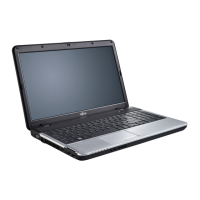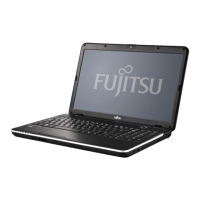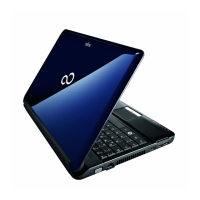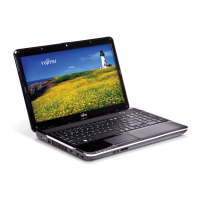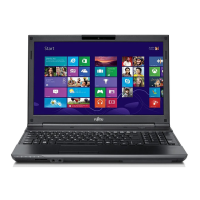Working with the noteb ook
Using the power-management features
PowerPowerBattery
The notebook uses less power when the available power-mana gement fe atures are used. You
will then be able to work longer when using the battery before having to recharge it.
Power efficiency is increased and environmental pollution reduced. By
choosing the best power options, you can make significant savings and
at the same time help protect the environment.
When you close the LC D screen , depending on the setting in W indows, the
notebook automatically enters a power saving mode.
► Select the pow er management functions in your Control Panel.
If you need further information about an option, you can get help with most
settings by pressing
F1
to open the Microsoft Help.
Whenthenotebooki
s in power-saving mode, the following must b e re membered:
During power savin
g mode, open files are held in the main memory
orinaswapfile on t
he hard disk.
Never turn off yo
ur notebook while it is in a power saving mode. If the built-in battery is
nearly empty, cl
ose the open files and do not go into power saving mode.
If you do not intend to use your notebook for a long period of time:
► Exit power s aving mode if necessary via the mouse or keyboard or by switching on the
notebook.
► Close all opened programs and completely shut down the notebook.
Adjusting f
an control
You can adjust the fan control in the BIOS Setup Utility. The following settings are available:
• Normal: The system is cooled to ensure that the maximum system performance is always
available and to keep the housing temperature as low as possible.
• Silent: The fan rotation speed, and thereby the noise created by the fan, is reduced.
► Call up the BIOS S etup Utility.
► In the menu Advanced - Miscellaneous Configurations select the Fan Control function.
► Choose the setting Normal or Silent.
Instructions for how to call up and operate the BIOS-Setup-Utility can be found
in chapter "
Settings in BIOS Setup Utility", Page 50.
36 Fujitsu
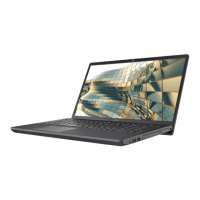
